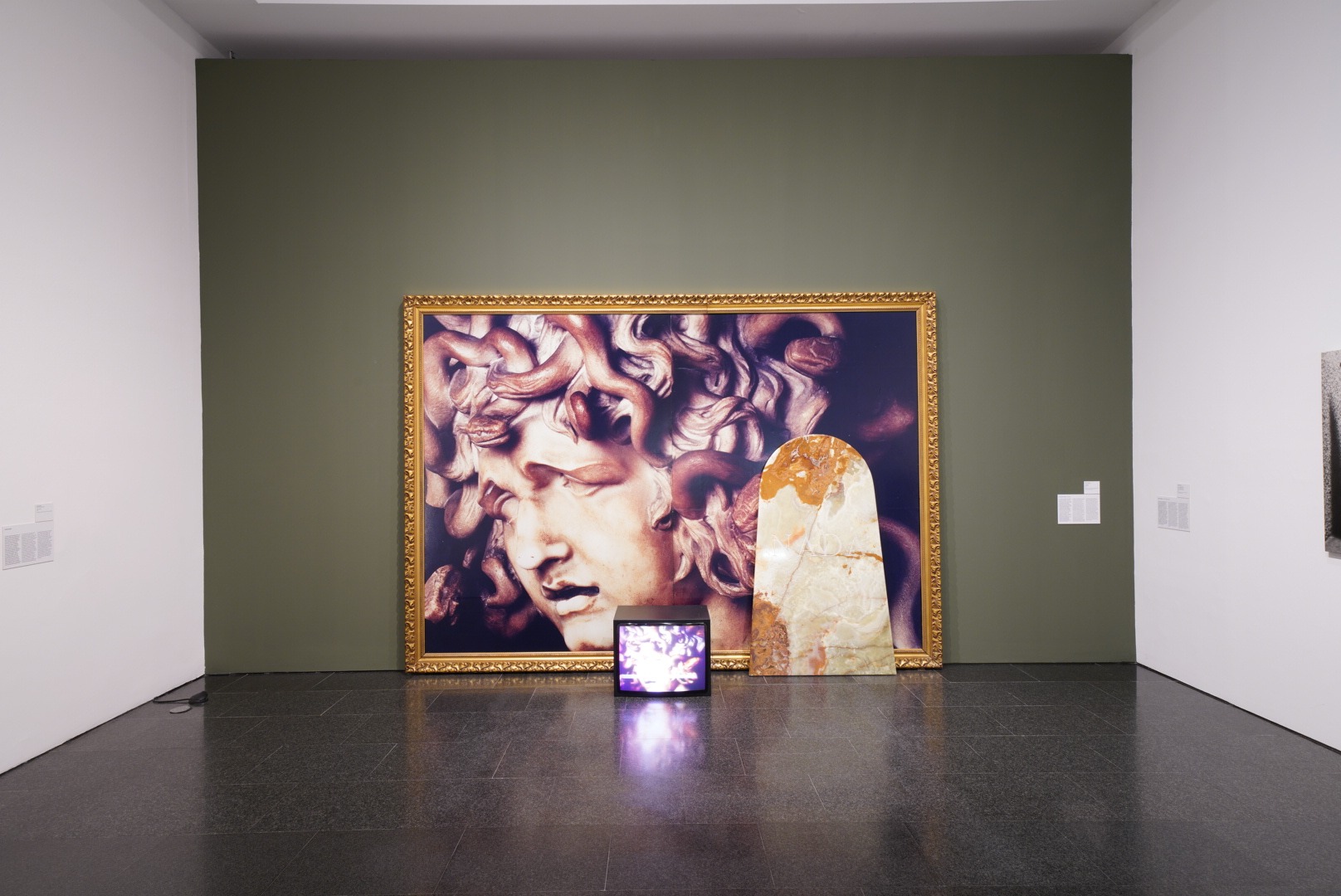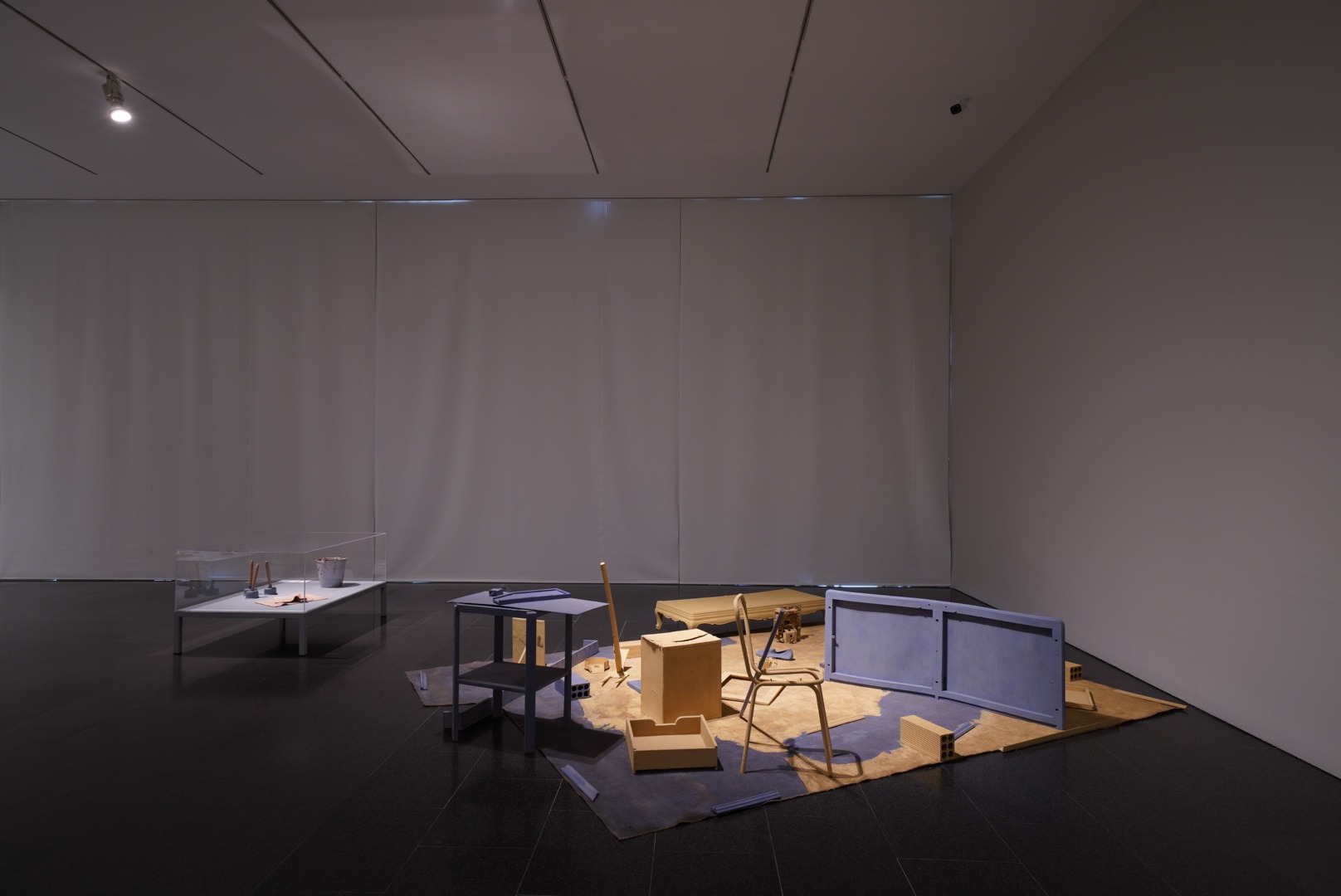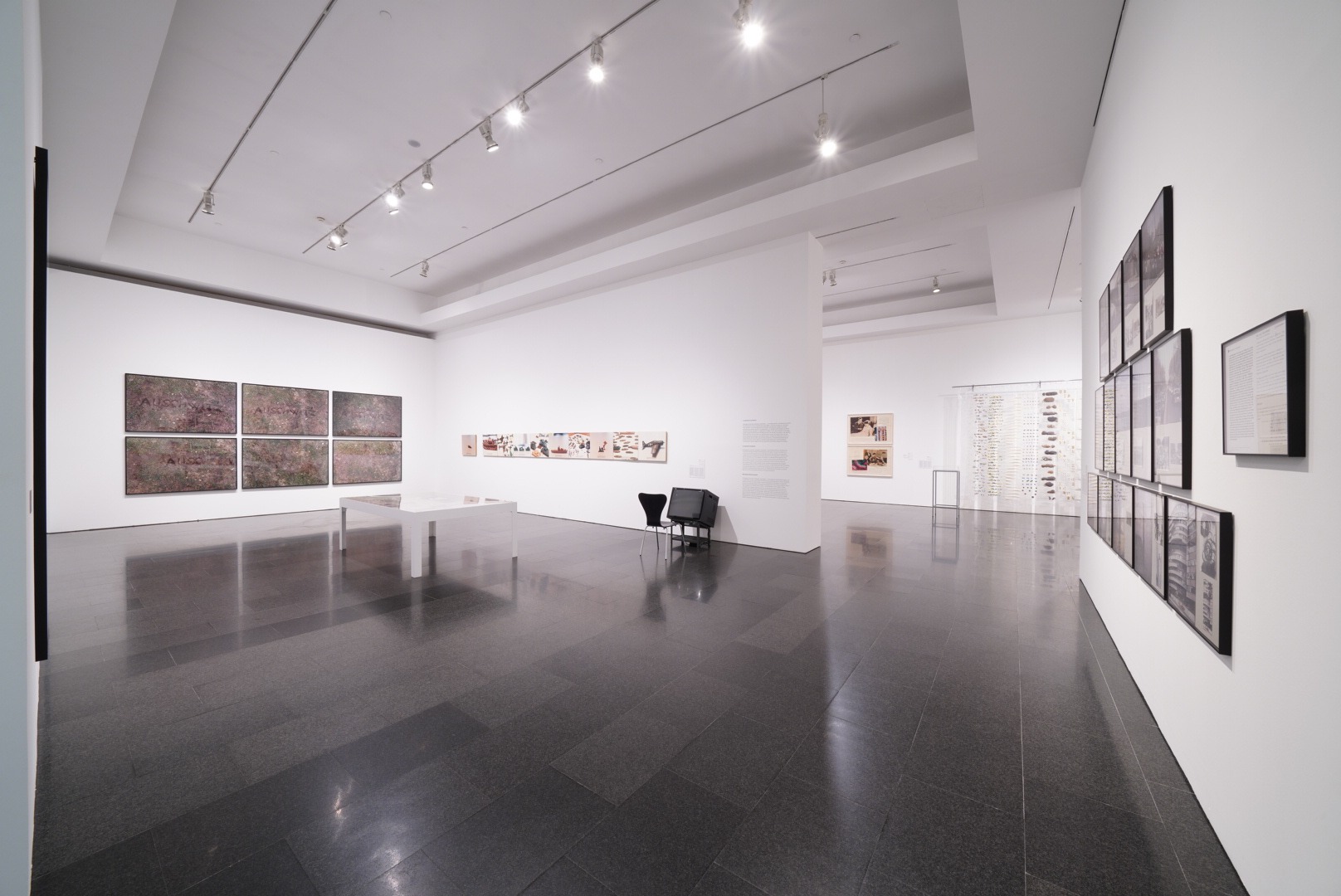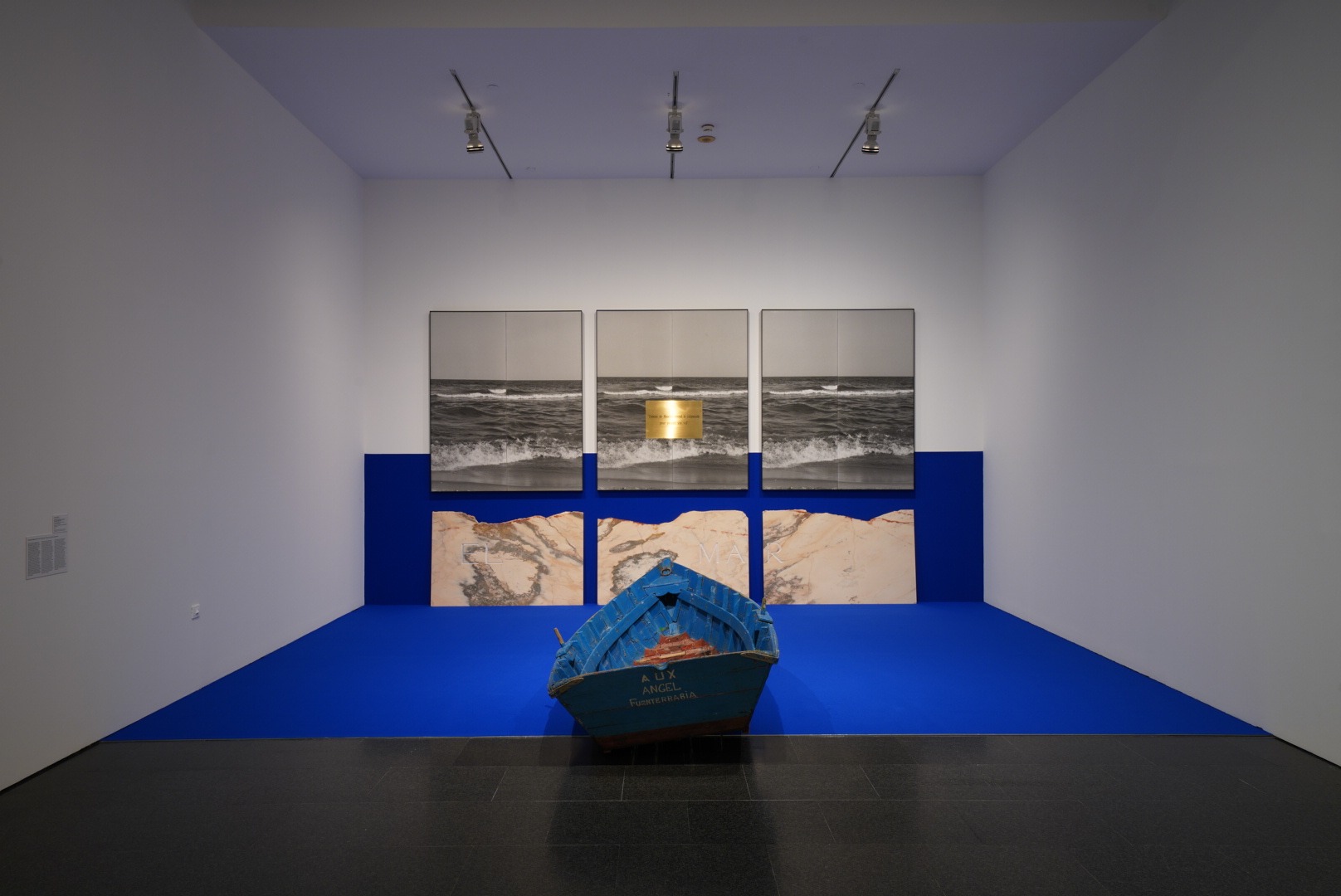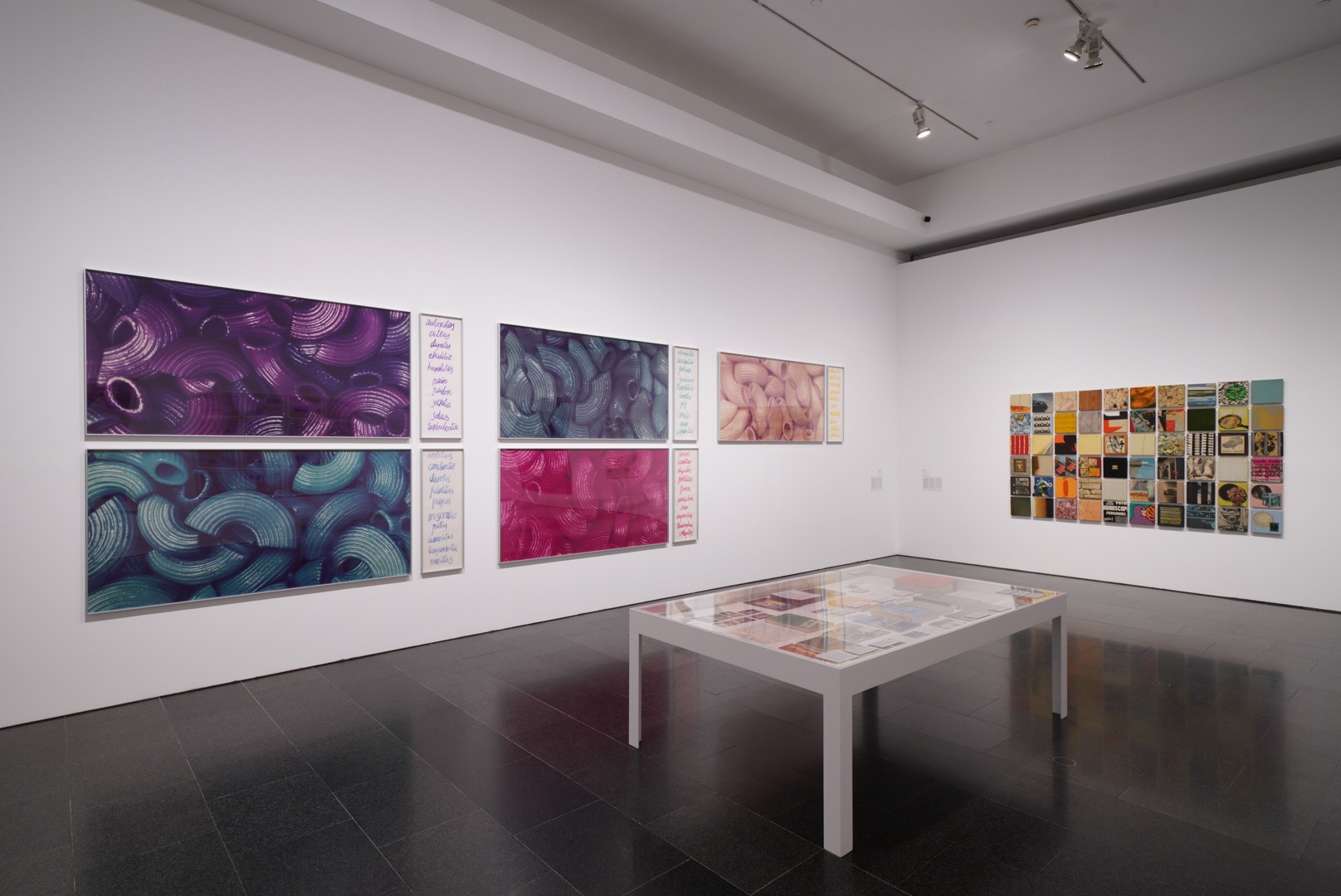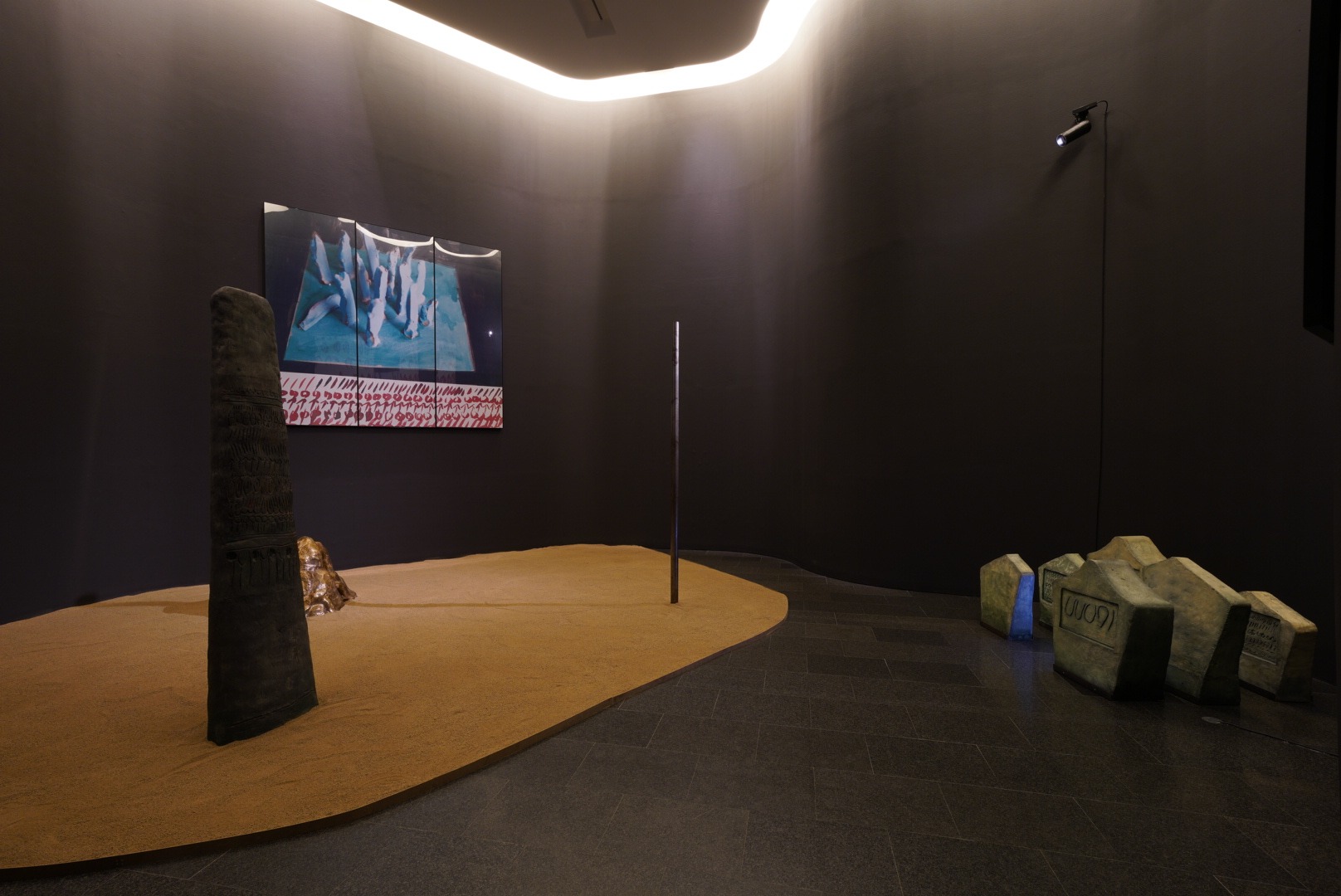In Real Time
Rafael Tous Collection of Conceptual Art
14 May 2021 - 06 Jun 2022

Exhibition view
Sala Metrònom
Photo: Miquel Coll
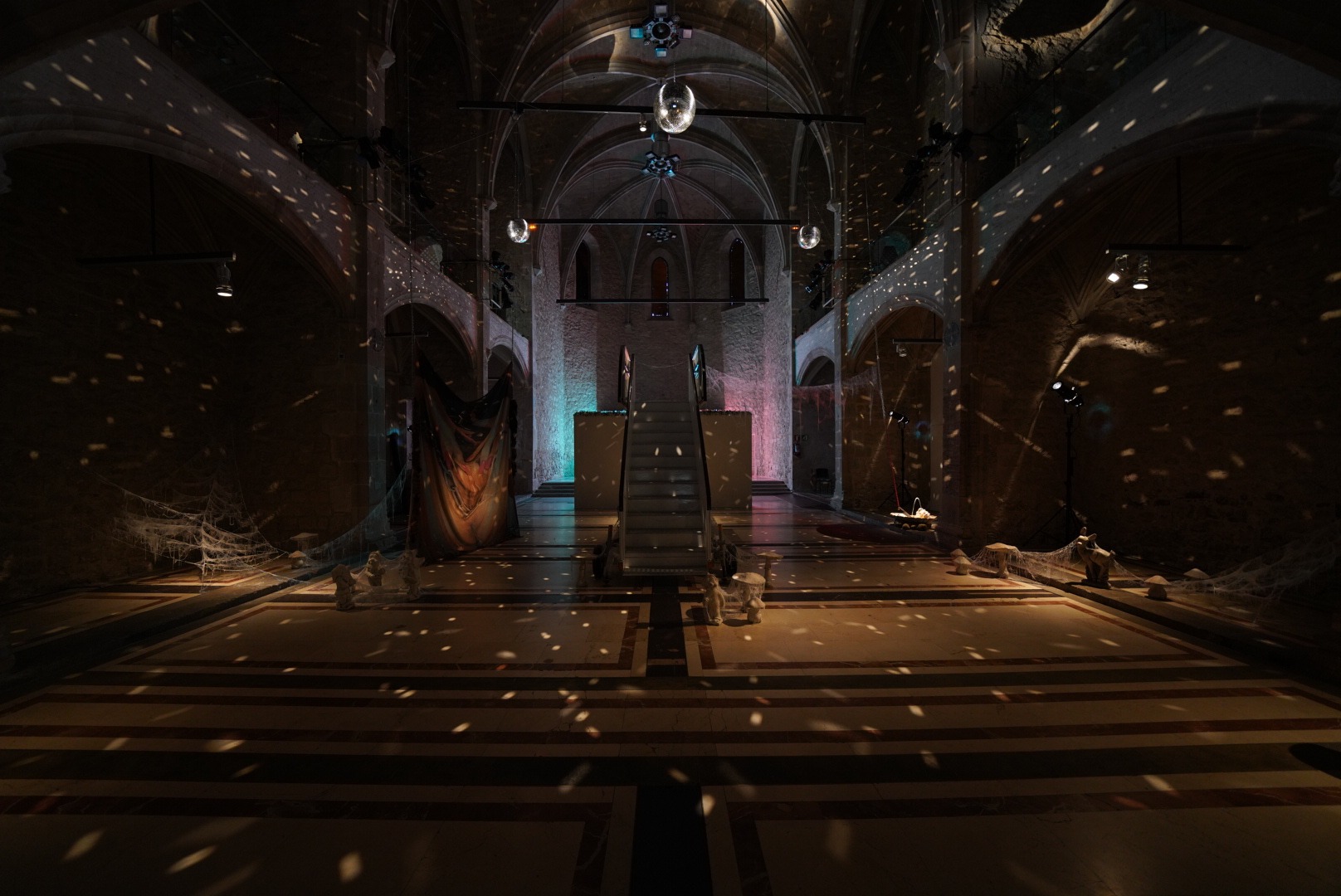
Exhibition view
MACBA Capella
Photo: Miquel Coll
►In Real Time. Rafael Tous Collection of Conceptual Art is the starting point of a new dialogue between the Tous Collection and the MACBA Collection, one that will enhance the narratives of an important part of the history of contemporary art and the trajectories of many artists.
►Emphasising the diversity of manifestations and attitudes among Conceptual artists, the exhibition includes themes such as action art and proposals related to nature in works that examine the ideological element of images and the power of the media, as well as works that function as devices of political critique, among others.
►The artists included in the exhibition are: Francesc Abad, Eugènia Balcells, Jordi Benito, Carmen Calvo, Jordi Cerdà, CVA (Comité de Vigilancia Artística), Benet Ferrer, Alicia Fingerhut, Teresa Gancedo, Ferran Garcia Sevilla, Eulàlia Grau, Josep Maria Joan i Rosa, Àngel Jové, Antoni Llena, Eva Lootz, Miralda, Fina Miralles, Muntadas, Pere Noguera, Jordi Pablo, Pilar Palomer, Carlos Pazos, Carles Pujol, Joan Rabascall, Àngels Ribé, Benet Rossell, Francesc Torres and Jaume Xifra.
In Real Time. Rafael Tous Collection of Conceptual Art
In Real Time. Rafael Tous Collection of Conceptual Art is the first exhibition of the Tous Collection at MACBA, and will add a significant contribution to the Museum’s already extensive fonds of Conceptual art. The show includes a wide selection of works from this donation, comprising almost one thousand works, which Rafael Tous has offered to the city of Barcelona and the Museum. Collected over decades in an intuitive and continuous manner, the works will become part of the permanent MACBA Collection. A collector, patron of the arts and cultural activist, Tous has always been linked to the world of culture, having established long-standing friendships with artists and creators who are fundamental to the understanding of the evolution of artistic practices that prioritised ideas and process over the object.
This conjunction of works offers a necessary re-reading, through new spaces of reflection, of the so-called Conceptual practices. The exhibition’s itinerary will generate coexistences and simultaneities that will reassess the established narrative and consolidate the international vocation of many of the artists. Featuring 120 works by 28 artists, the show can be seen as a significant journey around the experimental practices of the seventies and eighties in Catalonia from different perspectives. Action art, the interaction with nature, an interest in the media and consumerism, social and political critique, the word and the incorporation of objects are some of the aspects of the exhibition.
Carlos Pazos, at the Capella MACBA
No hay replay (There is No Replay) is an installation that was presented for the first time in 1989 at Sala Metrònom, Barcelona. It features various recurring components of the artist’s imaginary realm – the passing of time, memory and its fetishes, loss, randomness – which on this occasion are shrouded in darkness. The decontextualised objects introduce the spectator to a dreamlike space, visually striking while referencing staging as the sole form of representation. Here, the frozen image of a leap into the void, with the intimate journey, inner experience and risk that come along with it, gives rise to a degree of anxiety. Irony, parody and theatricality are the veritably subversive features at play. There is no turning back.
Jordi Benito, at Sala Metrònom
In Les portes de Linares (The Gates of Linares), Jordi Benito (Granollers, 1951 – Barcelona, 2008) left behind his more radical action art, with its Wagnerian references, finding a renewed starting point in Goya’s Tauromaquia, the image of the Passion of Christ and the music of Carles Santos. With its eight fragments or episodes, the installation brings together a multiplicity of components – literary, historical, experiential and sacred – that taken together enhance the symbolic values of the materials employed.
Les portes de Linares is the staging of a suspended moment. It recalls the events that occurred in 1947 in the Linares bullring, when the bullfighter Manolete, who Benito considered to be the total artist, was killed after being gored on the same day he had chosen as the finale of his career. Benito’s gaze, however, picks up on the testimony of the bull’s life. Tools and materials from farming and rural trades are arranged as still lifes, or raised in crosses as an image of the Passion, contrasting with civilising elements, which in comparison appear decadent. The bulls’ bodies are suspended in the air, in the act of falling, while pianos are placed with their keyboards against the wall or about to break in half. In turn, a block of calcium carbonate known as blanco de España (whitewash) receives the impact of a bull’s dead weight, fracturing the white pigment. With the death of total art, the artist sees himself in the body of the bull, as both are held in suspension over the piano of Carles Santos.
ARTISTS
The artists included in the exhibition are: Francesc Abad, Eugènia Balcells, Jordi Benito, Carmen Calvo, Jordi Cerdà, CVA (Comité de Vigilancia Artística), Benet Ferrer, Alicia Fingerhut, Teresa Gancedo, Ferran Garcia Sevilla, Eulàlia Grau, Josep Maria Joan i Rosa, Àngel Jové, Antoni Llena, Eva Lootz, Miralda, Fina Miralles, Muntadas, Pere Noguera, Jordi Pablo, Pilar Palomer, Carlos Pazos, Carles Pujol, Joan Rabascall, Àngels Ribé, Benet Rossell, Francesc Torres and Jaume Xifra.
RAFAEL TOUS, THE COLLECTION AND SALA METRÒNOM
Linked to the textile world, Rafael Tous (Barcelona, 1940) has been a life-long collector of art. He began acquiring Impressionist works when young, but by 1970 he had begun collecting artists of his own generation, with whom he developed close friendships. His collection grew out of visits to the artists’ studios, as well as the exhibitions at Galeria G, Sala Vinçon, Espai 10 of the Fundació Joan Miró and Espai B5-125 of the Universitat Autònoma, Barcelona.
One of the distinguishing features of the Tous Collection is that it developed organically, while the art it incorporated was being produced. On the other hand, although it presents a portrait of a particular time, it primarily represents the singular gaze of the collector who gave unity to these very diverse practices. As Elio Grazioli points out in La collezione come forma d’arte, although art collections reflect their times, when one observes ‘what they became when deviating from the mainstream, from the norm, this is when the depth and truth of the choices made become apparent’.
His commitment was to be consolidated with the opening of Sala Metrònom. From 1980 until 2006, first on Carrer Berlinès in the Sant Gervasi neighbourhood and then in the emblematic building on Carrer Fusina in El Born, Metrònom was a space for experimentation not only in the field of visual arts, but also in music, dance and theatre, where he encouraged new and experimental works with an extraordinary eye for quality.

